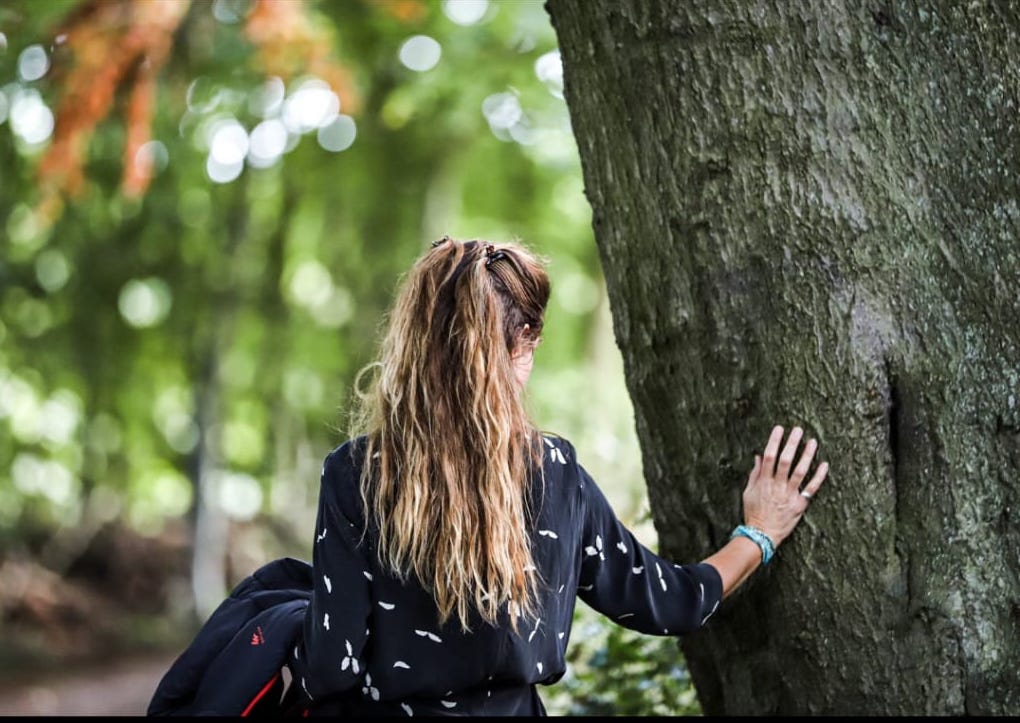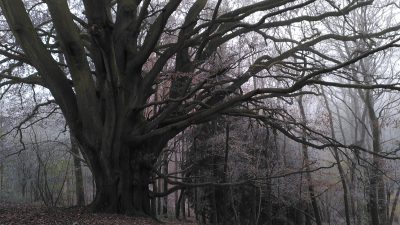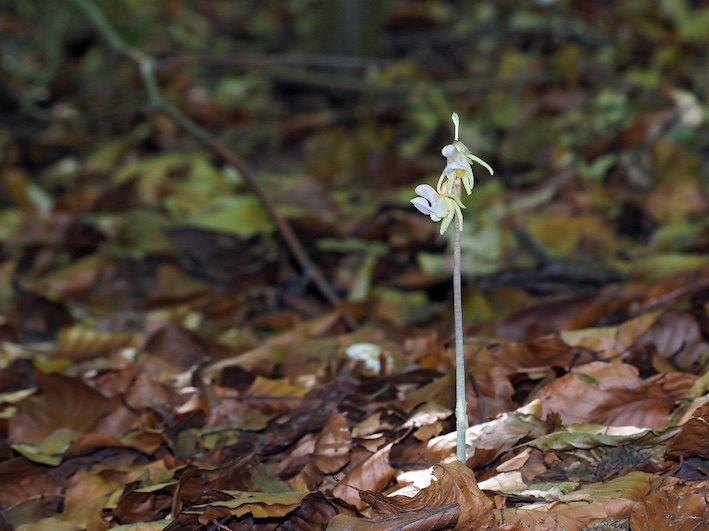
NathalieGhost Orchid
Much draws me to the Ghost Orchid (Epipogium aphyllum). Once declared extinct in Britain (2009) and now classed as Critically Endangered, there have been fewer than fifty sightings in the UK in the past 170 years, the last one in a a Chiltern beechwood not far from home.
I love that the Ghost Orchid can disappear for decades, re-emerging only when something aligns in a conversation among trees, fungi and orchid. Almost its entire life unfolds out of sight. Lacking chlorophyll and true roots, it endures as an ivory rhizome threaded with fungal strands. It is an obligate heterotroph and draws its carbon and minerals from its basidiomycete fungal ally. This ally happens to be an Inocybe species belonging to a genus where some species make psilocybin, the compound known for tilting perception toward deep interconnection. What the orchid returns is still uncertain: perhaps a sip of nectar for bees and hoverflies? Certainly a brief flare of beauty, for anyone awake (and incredibly lucky!).
The orchid’s preferred habitat in the UK, at least, is ancient woodlands dominated by beech. The grey crowns interlock, shade deepens, temperature swings soften, and soil moisture endures. In that subdued climate, the orchid may offer a tender flowering of white and violet flowers atop a pale waxy slender stem. Break the forest canopy for timber, fire, climate change, plantations or widened trails—and interplay of beech, fungus and orchid collapses. Keep the woods intact, their interbeing continues, observed or not.

The fidelity of the ghost orchid to beech woods feels personal. I grew up to the hush of beech leaves. I mapped toadstools that erupted through the mast and learned birdsong that echoed in the branches. After years of working in tropical forests, I returned home to raise a family and now have the great privilege of living on the flank of Wytham Woods in Oxfordshire, England. Pregnancy walks in those woods kept me calm and strong; later, I brought my children and made them chuckle with finger puppets in beech mast hats; we made dens with fallen beech branches. And now, I often sit with one of many veteran beeches to be found in the woods. Leaning against their trunks, I try to let their slow pulse settle mine. These trees are teaching me how to root and reach at once.
I love that in the Ogham alphabet the rune, Phagos, stands for learning; thin beech boards once carried carved texts, and boc (Old English for book) shares its root with the tree’s name. Healers distilled beech tar to ease coughs and packed fresh leaves on inflamed skin. Modern assays confirm antioxidant polyphenols and broad spectrum antimicrobials in bark and foliage, giving evidence to practice. Each ivory orchid spike, then, rises from a woodland library written in old stories and modern chromatography.
I am at the very beginning of my journey with the ghost orchid. I am still working things out. But, at the very least, I understand that to stand beside this being is to adopt its tempo. It invites me to tread lightly and think slowly, turn my attention from the canopy to the soil, and listen for the slight give of decomposing leaves. Grounding. I may never see the plant, and that is the lesson: journey over destination, values over outcomes. Research, conservation and community work, like fungal barter, are largely unseen. The Ghost Orchid matters because it refuses spectacle and shows resilience in quiet places. Letting it set my pace sharpens what my wider work requires: clear sight, steady breath, respect for networks over nodes, for the community over the individual. Whether or not the orchid ever appears to me as flower and scent, the discipline of looking will change me, and the change itself is a seed I hope to pass on to others.
One more promise: to honour the orchid through art and advocacy. I may bring it into costume and dance; it may find its place in sketch or poetry books I haven’t brought out in decades (apt!). And, at our upcoming MoTH Moots, I think I will let the Ghost Orchid stand for every quiet ally the forest shelters. I will keep you posted.

